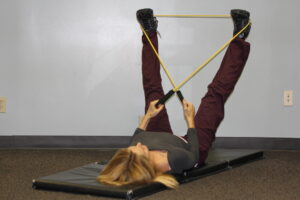In the realm of fitness and body transformation, the reach of cable workouts are nothing short of impressive. From the Arnold’s of yesteryear to the Instagram-famous fitness gurus of today, the cable machine has been a constant feature, wrapping itself into routines that sculpt and chisel muscles with finesse.
Whether you’re a fitness enthusiast looking to elevate your workout game, a home workout fanatic who’s keen on maximizing space and efficiency, or a health-conscious individual seeking versatile, low-impact strength training, cable exercises are your sturdy guide ropes.
This post unveils the myriad benefits and nuances of incorporating cable workouts into your fitness regimen. We’ll chart a course through a comprehensive array of exercises for the upper and lower body, arms, abs, and shoulders, ensuring you’ve got the full spectrum of possibilities to pull from. Are you ready to pull your fitness into a whole new dimension?
Understanding Cable Training
Cable training is a form of strength training that utilizes a pulley machine with adjustable cables and weight stacks. The beauty of cables lies in their ability to provide constant tension throughout the entire range of movement, resulting in increased muscle activation and growth. Unlike free weights, which rely on the force of gravity, cables can be manipulated to challenge stabilizing muscles and improve balance.
The versatility of cable machines means they are not just for bodybuilders or gym rats. Anyone from beginners to seasoned athletes can benefit from cable exercises, which is why it’s a staple in physical therapy and rehabilitation programs as well.
The Versatility of Cables: A Primer
Cables offer a unique training stimulus that, when utilized effectively, can be integrated into almost any workout routine. They can help in focusing on specific muscle groups or in performing functional movements that simulate everyday activities. In essence, cables can provide you with a well-rounded strength experience that translates into real-world functional fitness.
However, to unlock the full potential of cable workouts, understanding fundamental principles such as cable height and angle, body positioning, and the importance of controlled, deliberate movements, is key.
Upper Body Cable Exercises
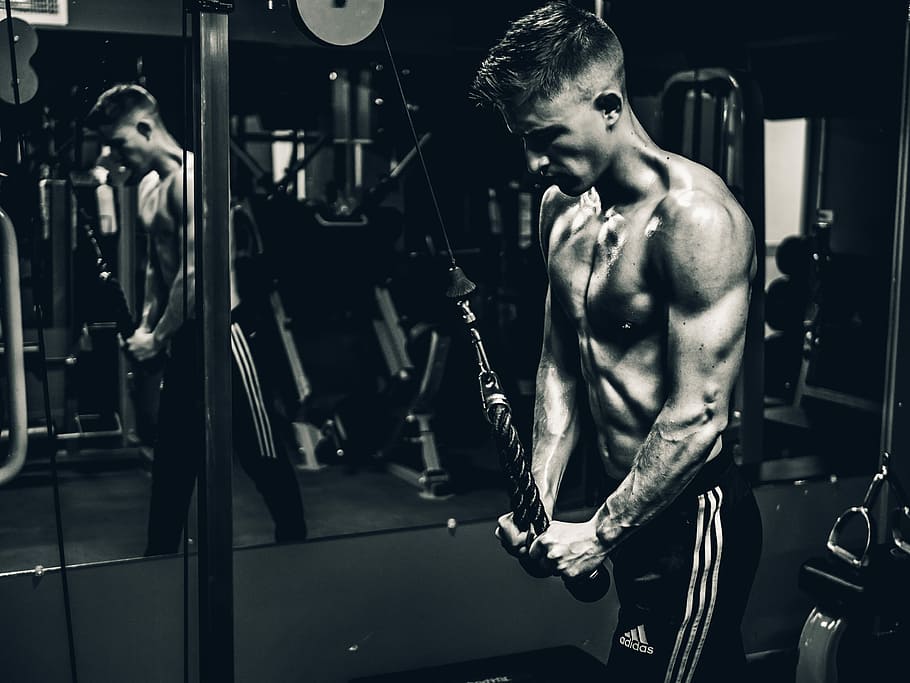
A strong upper body is essential for anything from good posture and daily activities.
How to Execute Upper Body Cable Exercises for Chest
Cable Chest Press:
- Begin by setting the cables to chest height on both sides of the machine.
- Stand in the center, grabbing the handles with your palms facing down.
- Take a step forward to create tension in the cables.
- Push the handles forward by extending your arms, ensuring you’re engaging your chest muscles.
- Slowly bring the handles back towards your chest, maintaining control.
- Repeat for the desired number of repetitions.
Cable Flye:
- Adjust the cables to your shoulder height.
- Stand between the cables, grabbing each handle with your palms facing forward.
- Lean slightly forward, keeping your back straight and a small bend in your elbows.
- With a smooth motion, bring your hands together in front of your chest, squeezing your pectoral muscles.
- Carefully return to the starting position, feeling a stretch in your chest muscles.
- Complete the set with controlled repetitions.
High to Low Cable Chest Press:
- Position the cables above your head.
- Stand facing away from the machine, handles in hand with your elbows bent.
- Press the handles down and across your body to the front, keeping your palms facing down.
- Feel the contraction in your lower chest, then slowly return the handles back to the starting position.
- Perform the exercise through the desired number of repetitions, maintaining a steady pace.
These exercises offer a comprehensive approach to chest development, targeting the muscle fibers from varied angles and intensities, ensuring a balanced and sculpted chest.
How to Execute Shoulder Exercises With Cables
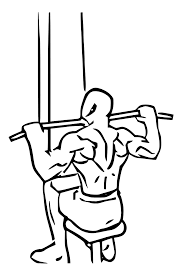
Lateral Raises:
- Set the cable at the lowest point.
- Stand sideways to the cable machine, grabbing the handle with the hand furthest from it.
- With a straight arm, lift the handle out to the side, up to shoulder height. Ensure your palm is facing down.
- Slowly lower the handle back down to the starting position.
- Perform an equal number of repetitions on each side, focusing on the deltoid muscle activation.
Front Raises:
- Position the cable at the lowest setting.
- Facing away from the machine, grab the handle with one hand.
- Keeping your arm straight, raise the handle in front of you to shoulder height, with your palm facing down.
- Lower it back to the starting position with controlled movement.
- Complete your set with an even number of repetitions on each arm, concentrating on isolating the front deltoids.
Cable Face Pulls:
- Adjust the cable to be aligned with your face.
- Use a rope attachment and grasp it with both hands, palms facing each other.
- Step back until the cable is taut, then pull the rope towards your face, separating your hands as they come closer.
- Your elbows should move out to your sides during the movement.
- Slowly return to the starting position, controlling the weight throughout the motion.
- Focus on squeezing your shoulder blades together at the peak of the exercise to maximize rear deltoid and upper back engagement.
Implementing these shoulder exercises into your workout routine can significantly enhance strength, stability, and aesthetics of the shoulder area. Remember, consistency and precision in your form are key to harvesting the benefits of cable exercises.
How to Execute Back Exercises With Cables
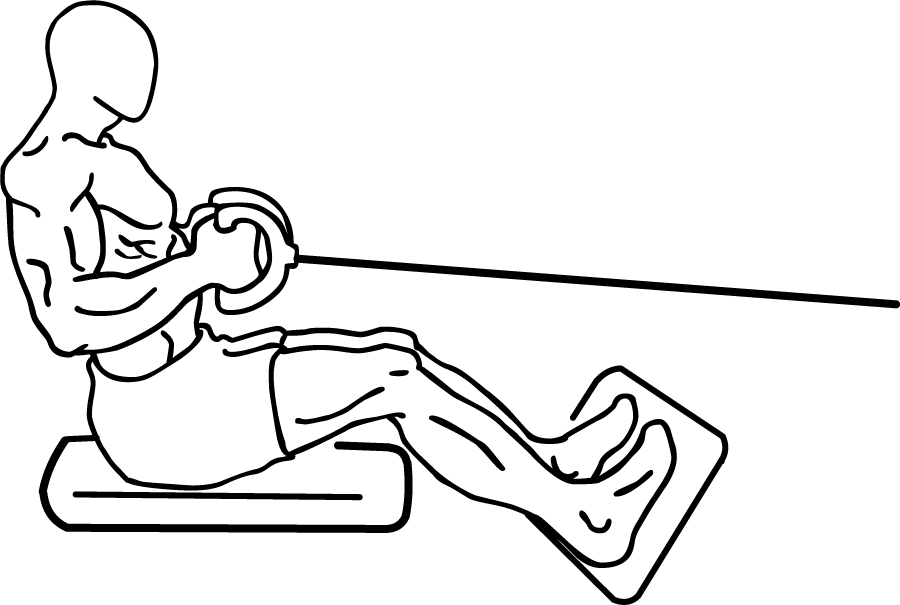
Seated Cable Rows:
- Sit down at the cable row machine and place your feet on the footrests, knees slightly bent.
- Grasp the handle using an overhand grip.
- Lean back slightly, keeping your spine straight and your shoulders down.
- Pull the handle towards your abdomen, driving the movement with your back muscles rather than your arms.
- Slowly extend your arms back to the starting position, feeling a stretch in your back muscles.
- Repeat for the desired number of repetitions, focusing on squeezing your shoulder blades together at the end of the movement.
Lat Pulldowns:
- Sit down at the lat pulldown machine and adjust the kneepad to comfortably fit your height.
- Reach up and grasp the bar with a wide overhand grip.
- Lean back slightly, maintaining a straight back and a slight arch in your lower back.
- Pull the bar down towards your chest, leading with your elbows and squeezing your shoulder blades together.
- Slowly return the bar to the starting position, controlling the weight on the way up.
- Continue for the recommended number of repetitions, concentrating on the lat muscles’ contraction and stretch through each movement.
Reverse Flyes:
- Set the cables to chest height and stand in the middle of the cable machine, facing away from it.
- Grasp the left handle with your right hand and the right handle with your left hand, crossing them in an “X” shape in front of you.
- With a slight bend in your elbows, open your arms out to the sides, keeping your chest up and spine straight.
- Pull the handles apart until your arms are parallel to the floor, focusing on moving through your shoulder blades and rear deltoids.
- Slowly return to the start position, controlling the handles as they come back in front of you.
- Perform an even number of repetitions, ensuring to maintain proper form and tension throughout the exercise.
By incorporating these back exercises into your cable workout routine, you can effectively target and strengthen the various muscles of the back, improving posture, and enhancing overall back appearance and functionality. Keep in mind to adjust the weight based on your fitness level and to prioritize form over the heaviness of the load to minimize the risk of injury.
Utilizing the cable machine for these workouts ensures that resistance is maintained not only during the concentric (muscle shortening) phase but also during the eccentric (muscle lengthening) phase, leading to greater muscle recruitment and a more challenging workout.
Abs and Core Strength

Strong and stable core muscles help with posture, balance, and protect against lower back pain. Cables can be excellent tools for achieving these benefits.
How to Execute Traditional Core Cable Exercises
Standing Cable Crunches:
- Attach a rope handle to the high pulley of a cable station.
- Facing the machine, grab the rope with both hands and kneel down, keeping your hips back and engaging your core.
- Crunch your abdomen and bring your head towards the ground, pulling the rope down while keeping your hips stationary.
- Slowly reverse the movement to the starting position, focusing on the stretch in your abs.
- Repeat for the desired number of repetitions, ensuring to maintain a tight core throughout the exercise.
Cable Russian Twists:
- Attach a single handle to the low pulley of a cable machine and sit on the ground facing the machine, legs extended and slightly bent.
- Grasp the handle with both hands, arms extended, and move away from the machine until the cable is taught.
- Lean back slightly and lift your feet off the ground, balancing on your sit bones.
- Twist your torso to the right, pulling the handle alongside, then twist to the left, keeping your core engaged throughout the movement.
- Perform an equal number of twists on each side, concentrating on the rotation coming from your waist.
Woodchoppers:
- Adjust the cable to the highest setting and attach a single handle.
- Stand sideways to the machine, feet shoulder-width apart, and grab the handle with both hands.
- With your arms extended, pull the handle down and across your body to the opposite knee, rotating your torso as you go.
- Return to the starting position in a controlled manner, focusing on the obliques and transverse abdominals during the movement.
- Complete your set, then switch sides and repeat, ensuring to keep your core engaged and movements fluid.
These exercises target different regions of your core, helping build strength and stability. For best results, incorporate these movements into your regular workout routine, paying close attention to form to avoid strain and maximize effectiveness.
How to Execute Advanced Core Cable Exercises
Cable Plank Rows:
- Attach a handle to the low setting on a cable machine.
- Get into a plank position facing sideways to the machine, with your free hand on the ground and the hand closest to the machine holding the handle.
- Perform a row, pulling the handle towards your rib cage while maintaining a stable plank position with minimal hip rotation.
- Slowly extend your arm back to the starting position, keeping tension in your core.
- Complete the desired number of repetitions before switching sides to ensure balanced core strength development.
Kneeling Cable Crunches with Resistance at the Back:
- Attach a rope handle to the high pulley of a cable machine.
- Kneel with your back to the machine, grabbing the rope handle with both hands behind your neck.
- Perform a crunch motion, bringing your elbows towards your thighs while resisting the pull of the cable.
- Slowly return to the starting position, focusing on keeping your core tight throughout the movement.
- Repeat for the set number of repetitions, ensuring your movements are controlled and deliberate.
Hanging Cable Leg Raises:
- Attach ankle straps to the low poles of a cable machine and strap your ankles in.
- Hang from a pull-up bar with your legs straight down and the cables taut.
- Raise your legs to a 90-degree angle, focusing on using your core muscles to lift your legs.
- Slowly lower your legs back to the starting position, maintaining tension in your abdominals throughout the descent.
- Aim for the recommended number of repetitions, keeping your movements smooth and controlled.
Incorporating these advanced exercises into your workout routine can significantly boost your core strength and stability. It’s important to adjust the weights to match your fitness level and to focus on performing each exercise with proper form to achieve the best results and prevent injuries.
Cables add a dynamic and consistent level of resistance to your core workout, engaging not just the superficial abs but also the deeper core muscles.
Lower Body and Leg Workouts
A well-developed lower body is the foundation of strength and athleticism. Cable machines allow for diverse exercises that target various leg muscles with precision.
How to Execute Lower Body Cable Exercises for Glutes
Cable Kickbacks:
- Attach an ankle strap to the low setting on a cable machine and secure it around your ankle.
- Face the machine, holding onto it for support, and slightly bend your supporting leg.
- Keeping your core engaged and your back straight, slowly kick your strapped leg straight back as far as you can while squeezing your glutes at the top of the movement.
- Return your leg to the starting position in a controlled manner, maintaining the tension in your muscles.
- Perform the desired number of repetitions before switching legs.
Glute-Hamstring Raises:
- Adjust the cable machine to attach an ankle strap around your ankle at the lowest setting.
- Lie face down on the ground, securing your feet under something stable or having a partner hold them.
- Slowly raise your torso off the ground by contracting your hamstrings and glutes until your body forms a straight line from your head to your heels.
- Lower yourself back down to the starting position with control, focusing on the eccentric movement.
- Repeat for the recommended number of sets and reps, ensuring to switch the ankle strap between legs for balanced development.
Step-up with Leg Abduction:
- Attach an ankle strap to a low pulley on the cable machine and secure it around your ankle.
- Place a step or bench near the machine and stand next to it, facing forward with the cable attached to the outside leg.
- Step up onto the bench with your inside leg, bringing your attached leg up and out to perform an abduction at the top of the movement.
- Step back down with control, returning your abducting leg to the starting position without letting it touch the ground for added tension.
- Complete the set number of repetitions before switching the ankle strap to the other leg and repeating the sequence.
By incorporating these cable exercises into your lower body workout regime, you’ll not only build stronger glutes but also improve overall lower body strength and functionality. Remember to adjust the resistance according to your fitness level and always prioritize form to maximize benefits and minimize the risk of injury.
How to Execute Quad-Focused Cable Exercises
Cable Squats:
- Attach a straight bar to the lowest setting on a cable machine.
- Stand with your feet shoulder-width apart, facing away from the machine, and grab the bar with both hands at shoulder level.
- Squat down as if you’re sitting back into a chair, keeping your chest up and knees behind your toes. Make sure to push through your heels to engage your quads.
- Return to the starting position by straightening your legs, squeezing your quads and glutes at the top of the movement.
- Perform the desired number of repetitions, maintaining a controlled pace and focusing on form.
Leg Extensions:
- Sit on a bench facing away from the cable machine and attach the ankle strap to your lower leg.
- Adjust the machine so the cable is aligned with your ankle when your leg is extended.
- Holding onto the sides of the bench for stability, extend your leg at the knee to raise the attached weight.
- Slowly return your leg to the starting position, ensuring a controlled movement throughout.
- Complete the set number of repetitions before switching legs.
Cable Lunges:
- Attach a handle to the low setting on a cable machine.
- Stand with your back to the machine, holding the handle in one hand at your side.
- Step forward with the opposite leg into a lunge, dropping your back knee towards the ground while keeping your front knee behind your toes.
- Push through the heel of your front foot to return to the starting position.
- Complete the desired number of reps on one leg before switching sides.
Incorporate these quad-focused exercises into your leg day routine to strengthen and tone your quadriceps. Adjust the weight to suit your fitness level, and always prioritize maintaining proper form to ensure the effectiveness of your workout and to prevent injury.
How to Execute Hamstring Cable Exercises
Cable Pull-Throughs:
- Attach a rope handle to the low setting on a cable machine.
- Facing away from the machine, stand with your feet shoulder-width apart and knees slightly bent.
- Bend forward at the hips and reach through your legs to grab the rope handle with both hands.
- Keeping your back straight, stand up by extending your hips and pulling the cable through your legs, focusing on using your hamstrings and glutes to perform the movement.
- Hinge at the hips to return to the starting position, maintaining control throughout the movement.
- Perform the recommended number of repetitions with a focus on form and controlled movements.
One-legged Hamstring Curls:
- Attach an ankle strap to the low setting on a cable machine and fasten it around your ankle.
- Stand facing the machine for balance, using the machine or a nearby stable object for support.
- Flex your knee to curl the leg with the ankle strap towards your glutes, ensuring the movement is driven by your hamstrings.
- Slowly lower your leg back to the starting position, maintaining tension in the hamstrings throughout.
- Complete the set number of repetitions before switching the ankle strap to the other leg and repeating.
Prone Hamstring Curls:
- Attach an ankle strap to both ankles and lie face down on a bench with the pulley machine behind you.
- Ensure the bench is adjusted so that your knees are just off the edge of the bench.
- Curl both legs up towards your buttocks by bending at the knees, focusing on contracting your hamstrings.
- Slowly lower your legs back to the starting position, keeping the movement controlled and avoiding letting the weights rest on the stack between repetitions.
- Perform the desired number of repetitions, focusing on maintaining proper form and smooth, controlled movements.
Incorporating these hamstring-focused cable exercises into your training routine will help strengthen and define your hamstring muscles, contributing to overall lower body strength and stability. Adjust the resistance according to your current fitness level and progress gradually to avoid the risk of injury.
Engage your lower body with cable workouts that not only focus on muscle building but also on improving functional strength, like those needed for climbing stairs or lifting objects.
Arm Exercises with Cables
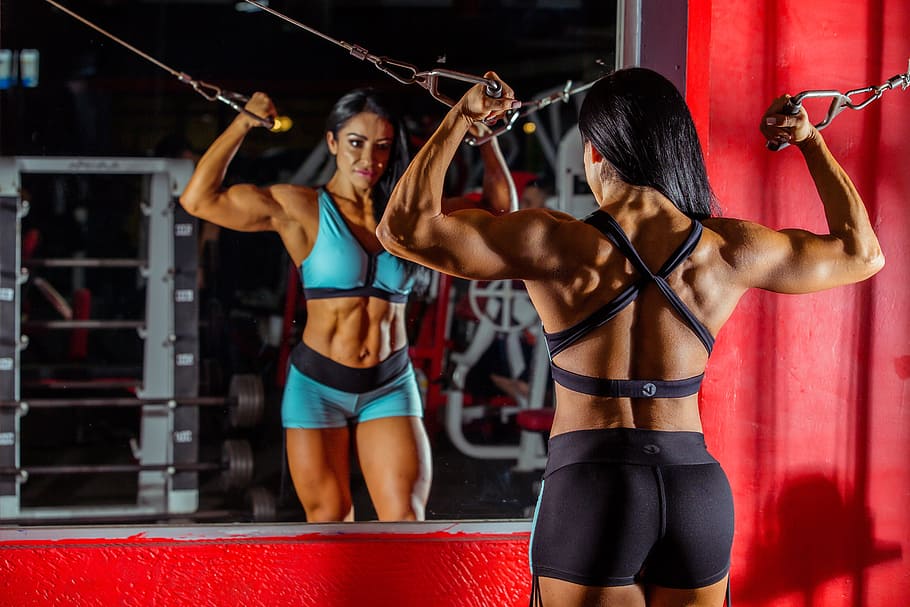
Strong and shapely arms are a fitness goal for many, and cables can provide the challenge you need to reach those goals effectively.
How to Execute Biceps Cable Exercises
Standing Cable Curls:
- Attach a straight bar or rope to a low pulley cable machine.
- Stand facing the machine with your feet shoulder-width apart and grasp the bar or rope with an underhand grip, hands also shoulder-width apart.
- Keeping your elbows close to your torso, curl the bar towards your chest, concentrating on contracting the biceps.
- Slowly lower the bar back to the starting position, maintaining tension in the biceps throughout the movement.
- Complete the desired number of repetitions, ensuring your form is consistent and controlled.
Overhead Cable Curls:
- Set up two cable machines with handles attached to the high pulleys on either side of you.
- Stand in the middle of the machines, grasping each handle with an underhand grip, and step forward into a staggered stance for balance.
- With your arms extended and elbows pointing forward, curl the handles down towards your head, squeezing your biceps at the bottom of the movement.
- Slowly extend your arms back to the starting position, keeping the movement controlled.
- Perform the recommended number of repetitions, focusing on smooth, controlled curls that isolate the biceps.
Concentration Cable Curls:
- Attach a low pulley to a cable machine and secure a handle.
- Sit on a bench positioned close to the machine, with your legs spread wide.
- Grab the handle with one hand using an underhand grip, and brace your elbow against the inside of your thigh, just above your knee.
- Curl the handle up towards your shoulder, focusing on isolating the bicep.
- Slowly lower the handle back to the starting position, ensuring that the movement is concentrated and controlled.
- Complete the set number of repetitions before switching arms.
Incorporating these biceps-focused cable exercises into your arm workouts will aid in building muscle mass and definition. Always prioritize maintaining proper form over lifting heavier weights to maximize muscle growth and minimize the risk of injury. Adjust the weight to match your fitness level and gradually increase as you progress.
How to Execute Triceps Cable Exercises
Tricep Pushdowns:
- Attach a straight bar to a high pulley on the cable machine.
- Stand facing the machine, feet shoulder-width apart, and grasp the bar with an overhand grip, hands shoulder-width apart.
- Keep your elbows close to your body and push the bar down by extending your elbows until your arms are fully extended.
- Slowly return to the starting position, keeping control and maintaining constant tension on the triceps.
- Perform the recommended number of repetitions, focusing on the movement of your triceps exclusively.
Tricep Rope Extensions:
- Attach a rope to a high pulley on the cable machine.
- Facing the machine, grasp the rope with both hands and bend your arms so your hands are positioned near your shoulders.
- Push down by extending your elbows, separating the rope ends as you fully extend your arms.
- Return to the start position, controlling the rope as you allow your elbows to bend and your hands to come back to your shoulders.
- Complete the desired number of repetitions, ensuring a focused contraction of the triceps at each extension.
Cable Kickbacks:
- Attach a handle to the low setting on a cable machine and choose a light resistance.
- Stand with your feet staggered for balance, and hold the cable handle in one hand.
- Lean forward slightly, maintaining a flat back, and bring your elbow up so your upper arm is parallel to the floor.
- Extend your lower arm back and out, straightening your elbow to kick the weight back.
- Return to the starting position with a controlled movement, feeling the tension in your triceps throughout.
- Finish all the set repetitions for one arm, then switch to the other arm and repeat.
Incorporating these triceps-focused exercises into your routine will help in sculpting, toning, and strengthening the back of your arms. Always ensure you are performing each exercise with proper form and control. Start with lighter weights to master the movements before gradually increasing the resistance to prevent injury and promote muscle growth.
Remember to keep your elbows close to your sides and avoid using excessive momentum to get the most out of your cable arm workouts.
Sculpting Shoulders with Cables

The shoulders are a three-headed muscle group that craves the unique resistance profile provided by cable workouts.
How to Execute Front Delt Exercises
Front Delt Raises:
- Attach a handle to the low pulley of a cable machine.
- Stand facing away from the machine, grip the handle with your palm facing down, and step forward until the cable is taut.
- With a slight bend in your elbow, raise your arm straight in front of you until it is parallel with the floor.
- Pause at the top of the movement, then slowly lower your arm back to the starting position.
- Perform the desired number of repetitions before switching arms.
Front Cable Raises:
- Use a dual cable machine and attach handles to the low pulleys on both sides.
- Stand in the middle of the machine, pick up the handles with your palms facing each other, and take a step forward to create tension.
- With straight arms, lift the handles up and in front of you until they are parallel with the floor.
- Pause briefly at the top, then lower the handles back down to the starting position in a controlled manner.
- Complete the recommended sets and repetitions, focusing on using a weight that allows for movement control throughout.
One-Arm Cable Front Raise:
- Attach a handle to a low pulley cable machine.
- Stand perpendicular to the machine, and pick up the handle with the hand furthest from it, palm facing down.
- Keeping your core tight and a slight bend in your elbow, raise your arm in front of you up to shoulder height.
- Pause at the top, then slowly lower back to the starting position with control.
- Finish all the prescribed reps on one side before switching to the other arm.
Incorporating these front delt exercises into your shoulder routine can significantly enhance shoulder strength and aesthetics. It’s crucial to keep the movements controlled and to avoid swinging the weights to maximize muscle activation and reduce the risk of injury. Adjust the weight based on your ability to maintain proper form throughout the sets.
How to Execute Side and Rear Delt Exercises
Cable Lateral Raises:
- Attach a handle to the lowest setting on a cable machine.
- Stand with the machine to your side and pick up the handle with the hand farthest from the machine, keeping your body upright and your core engaged.
- With a slight bend in your elbow, lift your arm out to your side until it is parallel with the floor. Keep your wrist in a neutral position throughout the movement.
- Pause briefly at the top, then slowly lower the weight back to the starting position, maintaining control and tension on the side delt.
- Repeat for the desired number of repetitions before switching sides.
Cable Bent-Over Raises:
- Set the pulley on a cable machine to the lowest position and attach a handle.
- Stand facing the machine, bend at the hips keeping your back straight, and grab the handle with both hands.
- With your arms slightly bent, lift your arms straight out to the sides, keeping your head down and back straight.
- Lift until your arms are parallel to the floor, then hold the position for a moment before slowly returning to the starting position.
- Perform the prescribed sets and repetitions, focusing on the rear deltoids’ contraction.
Reverse Cable Flyes:
- Set up two cable machines with the pulleys positioned at their highest settings and attach a handle to each.
- Stand in the center of the machines, and grab the left-side handle with your right hand and the right-side handle with your left hand, crossing them in front of you.
- With a slight bend in your elbows, open your arms out to the sides, squeezing your shoulder blades together as you move.
- Pause when your arms are extended to your sides, then slowly bring your hands back together in a controlled manner.
- Focus on using the rear delt muscles throughout the movement, avoiding momentum to ensure muscle engagement.
Incorporating these side and rear delt exercises into your shoulder workout routine will help in achieving a balanced and sculpted shoulder appearance. Remember to adjust the weight so that you can complete all sets and repetitions with good form, focusing on the mind-muscle connection to maximize gains and prevent injury.
Maintain control throughout the lift and descent, focusing on the eccentric phase to really feel the burn in those shoulders.
Full-Body Cable Workouts
The body is a system, and full-body workouts with cables can ensure you’re working both individual muscle groups and multiple muscles together in coordinated, functional movements.
How to Perform Full-Body Cable Workouts
Squat to Press:
- Attach a straight bar to the low pulley of a cable machine and select the appropriate weight.
- Stand with your feet shoulder-width apart, facing away from the machine, and grab the bar with both hands at shoulder height.
- Squat down, keeping your back straight and chest up. As you push back up to standing, press the bar overhead in one fluid motion.
- Lower the bar back to shoulder height as you squat down for the next rep. Repeat for the desired number of repetitions.
Cable Deadlifts:
- Attach a straight bar to the lowest setting on a cable machine.
- Stand with your feet hip-width apart, facing the machine. Bend at your hips and knees to grab the bar with both hands, palms facing you.
- With a straight back, drive through your heels to stand up straight, pulling the bar up with you. Keep the bar close to your body throughout the movement.
- Lower the bar back down in a controlled manner. Complete the desired number of reps.
Cable Woodchopper:
- Adjust the cable machine to set the handle up high. Stand side on to the machine with your feet shoulder-width apart.
- Grip the handle with both hands and pull it down and across your body to your opposite hip, rotating your torso as you go.
- Return to the starting position in a controlled manner. After completing the set on one side, turn around to work the opposite side.
Single-Arm Cable Row:
- Set a handle at waist height on the cable machine.
- Stand facing the machine, with legs slightly bent and one foot in front of the other for stability.
- With your body slightly leaning forward, pull the handle towards your waist, squeezing your back muscles.
- Slowly extend your arm back to the starting position, maintaining tension. Complete all reps on one side before switching arms.
Woodchopper to Lunge Combination:
- Adjust the cable machine so the handle is at your shoulder height.
- Stand with your side to the machine and grab the handle with both hands.
- Perform a woodchopper by diagonally pulling the cable down across your body to the opposite hip.
- After completing the woodchopper, keep the handle at your lower side, step back into a lunge with the leg that’s furthest from the machine.
- Return to starting position and repeat the sequence for the desired number of repetitions before switching sides.
These full-body cable exercises not only target specific muscle groups but also challenge your core stability and coordination, making for a balanced and comprehensive workout session. Remember to maintain control throughout each movement and adjust the cable weight as necessary to keep your form correct and prevent injury.
Ensuring you cover all major muscle groups, a full-body cable workout can provide a comprehensive fitness boost.
Adjusting Cable Machines for Optimal Performance
Making the most out of your cable workouts involves setting up the machine correctly. Adjust cable heights according to the exercise, focus on a full range of motion, and choose the appropriate resistance to challenge yourself without sacrificing form.
Learning to customize your cable machine is an art that can greatly enhance your workout experience and results.
Building Functional Strength with Cables
Cable machines aren’t just for show muscles; they’re for real. The ability to perform exercises that mimic everyday movements makes cable workouts an invaluable tool for those looking to enhance their functional capabilities.
Integrating lunges with a cable, performing rotational presses, or engaging in resisted running or throwing motions, explain how cable workouts can prepare you for life outside the gym.
Integrating Cables with Other Tools
Illuminating the synergy formed by combining cable workouts with other fitness equipment or techniques. Whether pairing cables with free weights for an intensity boost, stabilizing your core with a Swiss ball during cable exercises, or adding a balance challenge with a BOSU ball, harmonizing different tools can give your workouts a dynamic edge.
Frequently Asked Questions (FAQs)
A1: Aim for 2-3 times per week, allowing adequate rest between sessions to ensure muscle recovery and growth.
A2: Cable machines are versatile and suitable for all fitness levels. Beginners should start with lighter weights and focus on mastering the form of each exercise.
A3: Cable machines offer a continuous tension throughout the exercise, a controlled movement path for better form, and the ability to easily adjust weights. They’re also safer to use without a spotter compared to free weights.
A4: Most cable machines have pins to select the desired weight and adjustable pulleys to change the height. Ensure the pulley is set to the appropriate height for the exercise, and always start with a lower weight to focus on form.
A5: Absolutely. Cable machines are incredibly versatile and can be used to target every major muscle group, allowing for a comprehensive full-body workout.
A6: Always warm up before starting your workout, select an appropriate weight that allows you to complete each exercise with good form, and focus on controlling the movement both during the lift and the release.
A7: Yes, integrating cable workouts can help with weight loss by building muscle, which in turn increases your metabolism. Pair these workouts with cardio and a balanced diet for best results.
A8: Definitely. Cable workouts are great for athletes due to their emphasis on functional strength and the ability to mimic sport-specific movements, enhancing performance and reducing the risk of injury.
Conclusion
Summarizing the benefits and the wealth of exercises cable workouts bring to the table, this guide underlines the potential they offer for anyone looking to enhance their strength, improve their physique, or shoot for functional fitness. By incorporating the principles and workouts outlined in this expansive exploration, fitness enthusiasts everywhere can create workouts that pull together every facet of their training goals.
May your cable workouts be the strong thread that weaves your fitness aspirations into tangible, lasting results. It’s been a pleasure serving as your guide through this detailed exploration of cable exercises. I look forward to hearing about your successes and the exercises that have empowered your fitness routine. Keep up the strong pull!




